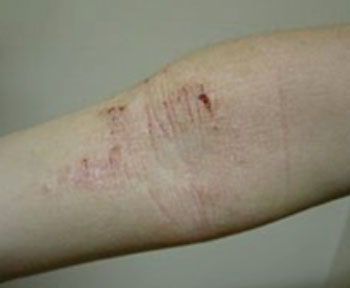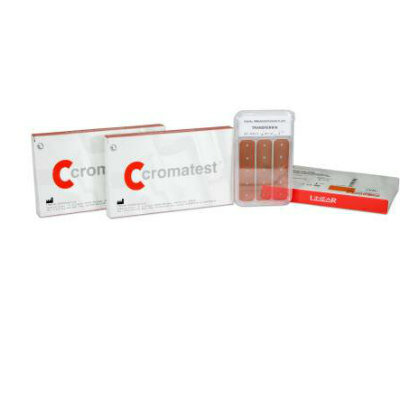Additional Genetic Loci Linked to Development of Atopic Dermatitis
By LabMedica International staff writers
Posted on 03 Nov 2015
A large genomic study linked added 10 genetic loci to the 21 already known that indicate risk of developing the chronic skin disease atopic dermatitis.Posted on 03 Nov 2015
Atopic dermatitis, also known as atopic eczema, causes itchy, red, swollen, and cracked skin that often starts in childhood with changing severity over the years. Clear fluid may ooze from the affected areas, which often become thickened over time. In children under one year of age much of the body may be affected. As they get older the back of the knees and front of the elbows are the most common area for the rash. In adults the hands and feet are most affected. The cause of the disease is not known but believed to involve genetics, immune system dysfunction, environmental exposures, and difficulties with the permeability of the skin.

Image: Atopic dermatitis of the inside crease of the elbow (Photo courtesy of Wikimedia Commons).
Investigators at the University of Gothenburg (Sweden) were part of an international task force that performed a meta-analysis of more than 15 million genetic variants in 21,399 cases of atopic dermatitis and 95,464 controls from populations of European, African, Japanese, and Latino ancestry, followed by replication in 32,059 cases and 228,628 controls from 18 studies.
The investigators reported in the October 19, 2015, online edition of the journal Nature Genetics that they had identified ten new risk loci, bringing the total number of known atopic dermatitis risk loci to 31 (with new secondary signals at four of these loci). Notably, the new loci included candidate genes with roles in the regulation of innate host defenses and T-cell function, underscoring the important contribution of immune mechanisms to the development of atopic dermatitis.
"We identified ten new genetic variations, making a total of 31 that are currently known to be associated with atopic dermatitis," said contributing author Dr. Bo Jacobsson, associate professor of obstetrics and gynecology at the University of Gothenburg. "Of particular interest is that each of the new ones has a role to play in regulation of the immune system. While the new variations contribute in only a small way to the risk of developing atopic dermatitis, knowing about them will raise our awareness about the mechanisms of the various diseases. "Our ultimate hope is that additional treatment methods will emerge as a result."
Related Links:
University of Gothenburg












